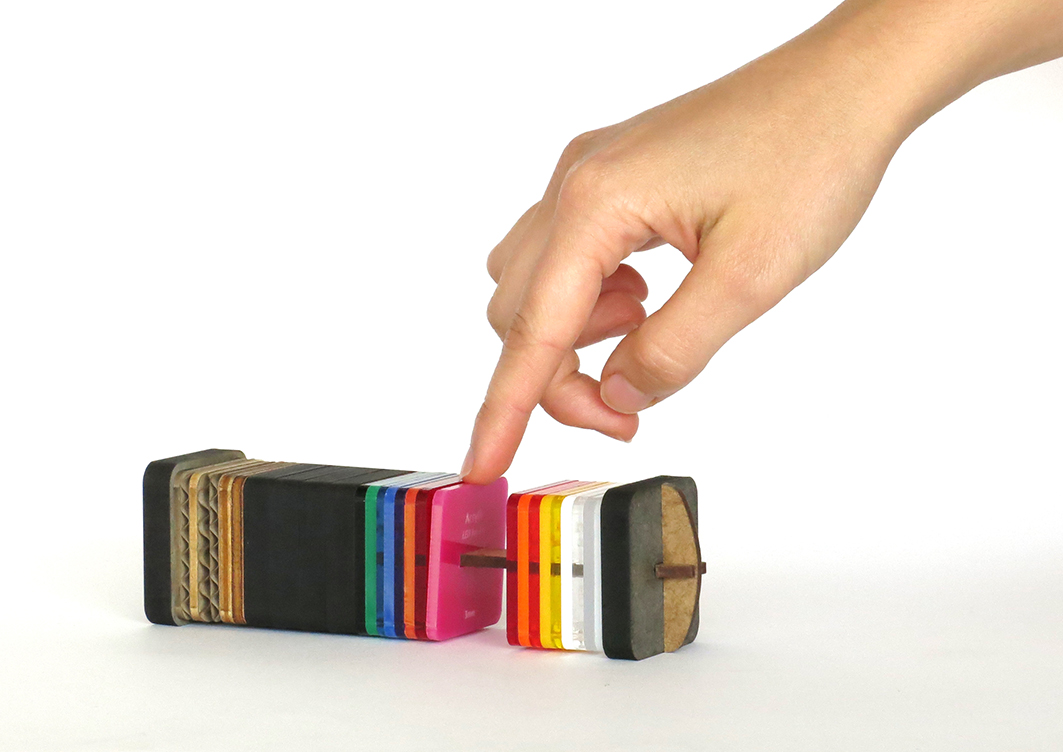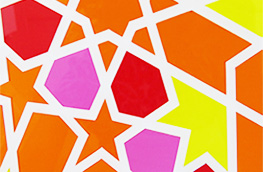The complete laser cutting materials list!
Posted By Nicolas Sadeghi on Jul 20, 2016 | 0 comments
Are you a novice in laser cutting and wondering which kind of objects you can create with it? Are you more a regular user, who wants to experience a new way to make laser cut parts? Well, no matter what your skills in laser cutting are, this list of laser-cutting materials will give you a broad overview of the material you can use with this technology and those offered by our service.
In this article, you will learn about:
- Our available materials (MDF, Plywood, PMMA, Cardboard);
- Laser cutting wood (especially MDF and Plywood);
- Laser cutting plastic (especially PMMA);
- Laser cutting Cardboard;
- Other material possibilities: metal, foam, paper, textile;
- And which materials you cannot use for Laser cutting.
Meet our laser cutting materials
We offer 4 main materials for laser cutting: plywood, MDF, acrylic, and cardboard. Each of them can be declined, in different types, colors, and thicknesses, amounting altogether to more than 60 materials options. If you visit our materials page, you’ll find specific design guidelines. In this article, we’ll give you a short tour of our materials, and the other options that laser cutting offers.
1. Laser cutting wood
Laser cutting is an amazing technology to use with wood materials because it allows you to give flexibility to a rigid material and get a precise cut.
Among the long list of wood you can laser-cut the most used are MDF and Plywood:
MDF
Medium-density fibreboard (MDF) is an engineered wood product made with wood, wax and resin binder. The Panels are then formed by applying high temperature and pressure to create aesthetic light beige panels with a fine texture.
This material is Isotropic, inexpensive, resistant, light, and compares to real wood. These properties make it a good substitute to wood to produce parts with a soft surface aspect, lightweight and resistant.
With our laser-cutting service, you can make wood parts in MDF with 7 colors options and 4 thickness options from 3 to 10 mm.
Plywood
What is the difference between wood and Plywood? Well, Plywood consists of several sheets of wood, glued one on top of another, alternating the wood grain on adjacent layers. Thus, it is not wood from the block but this structure gets a great mechanical resistance (for structures, buildings), flexibility (furniture), aesthetic beauty, water resistance, and lightness.
Using our service you will be able to choose between two different kinds of plywood and thicknesses.
- Okoumé is an exotic wood, then more expensive than poplar. It is slightly pink and mainly used in models, small furniture, decoration, and packaging.
- Poplar is very light green in color, can be used in the same way that Okoumé. Poplar is a very soft wood, and it shows markings at the slightest stroke. It is more sensitive to moisture than okoumé is.
Choosing between MDF and Plywood:
Plywood is more resistant and lighter than MDF, and stands humidity better. It’s also more expensive. Plywood lets the woods and nods of the wood appear. This gives a more natural look to the parts, which is not available with MDF. You can screw and unscrew several times into plywood, and not into MDF. However, MDF stands gluing and drilling better.
Not yet available at Sculpteo, but possible to laser cut, you can use other kinds of plywood such as Red oak, Cherry, Holly; and other types of wood: Balsa, Birch…
2. Laser cutting plastic
Acrylic (also known as Plexiglas, Lucite, PMMA)
PMMA is an amazing material to work with because it is both transparent as glass but resistant as plastic. At Sculpteo, we offer translucent PMMA but also more opaque colors to provide you with a wide range of possibilities. You can choose from 17 different colors and 4 different thicknesses.
Other kinds of plastic are also possible to Laser cut:
- ABS (acrylonitrile butadiene styrene)
- Delrin (POM, acetal)
- High density polyethylene (HDPE)
- Kapton tape
- Mylar (polyester)
- Nylon – melts badly
- PETG (polyethylene terephthalate glycol)
- Polyethylene (PE)
- Polypropylene (PP)
- Styrene
- Two-tone acrylic, which means that the core material color is different from the top one.
3. Laser cutting cardboard
Whether you need an original business card or communication tools, laser-cutting cardboard can provide you a quick, affordable and unusual way to create astonishing marketing material. Easy to work with, it can be cut, folded and allows different types of assembly (glue, staples, etc.). Made from wood fiber, cardboard is also especially ecological. It’s easy and economical to produce, and light to convey. It is recycled, recyclable and biodegradable. However, cardboard has a low resistance to humidity and fire, unless it receives a specific treatment.
If you desire to make parts in paper with laser-cutting we can offer you 3 differents cardboard choices and 4 different thicknesses.
- Corrugated is made of paper sheets of various thicknesses alternated between flat and corrugated sheets..
- Grey cardboard is ideal for cardboard crafting, binding, framing, displays and lithography.
- Cellulose is well-suited for framing, binding and model building.
Laser cutting offers a range of possibilities which, even if they’re not part of our materials options for now, are worth mentioning.
4. Laser cutting Metal
For metals, laser-cutting is often compared to Water-jetting technology. The main differences between the two processes are the technology used (laser or water jet) and the precision and finish. For instance, a part cut with CO2 laser will have a risk to be deformed, while there is no thermal stress with water-jetting. Also, you can make thinner parts with Water jet cutting, but with a laser, you have the possibility to drill, engrave, ablate or weld.
The two main metal material you can use with laser-cutting are:
- Stainless steel (up to 0.060″)
- Spring steel (up to 0.060″)
5. Laser cutting Foam
Using Foam for laser-cutting is especially suitable for suitcase inserts, padding or seals. You can cut the precise shape of the object you need to protect and create a housing made-to-measure.
- Depron foam
- EPM
- Gator foam
- Polyester (PES)
- Polyethylene (PE)
- Polyurethane (PUR)
- Neoprene
6. Laser cutting Textile
Textile is one of the latest material used with laser cutting, but the results are already astonishing. Allowing the possibility to create a digital embroidery, the technology is time and money saving compares to the traditional means of production. Still, the range of fabric you can use is limited at the moment.
Which materials can’t be used with Laser Cutting ?
- Most metals. At first, it might be surprising because metal is one of the most used material in laser-cutting. Nevertheless to use it, it is imperative to get a thin sheet. Thus, the majority of thick metal are unsuitable for laser cutting.
- Printed circuit board
- Polycarbonate (PC, Lexan) You can try to use this material with laser cutting but be aware that the fumes are really noxious.
- Any material containing chlorine as ; PVC , Vinyl
- Glass, it can be engraved with laser, but not cut.
- Carbon fiber
- High-density polyethylene (HDPE) thicker than 1/16
Did you already work with these materials? Have you ever worked with another kind of materials? Feel free to share with us your experience we will be pleased to learn more about your projects!


 Connect with Google
Connect with Google Connect with Facebook
Connect with Facebook


